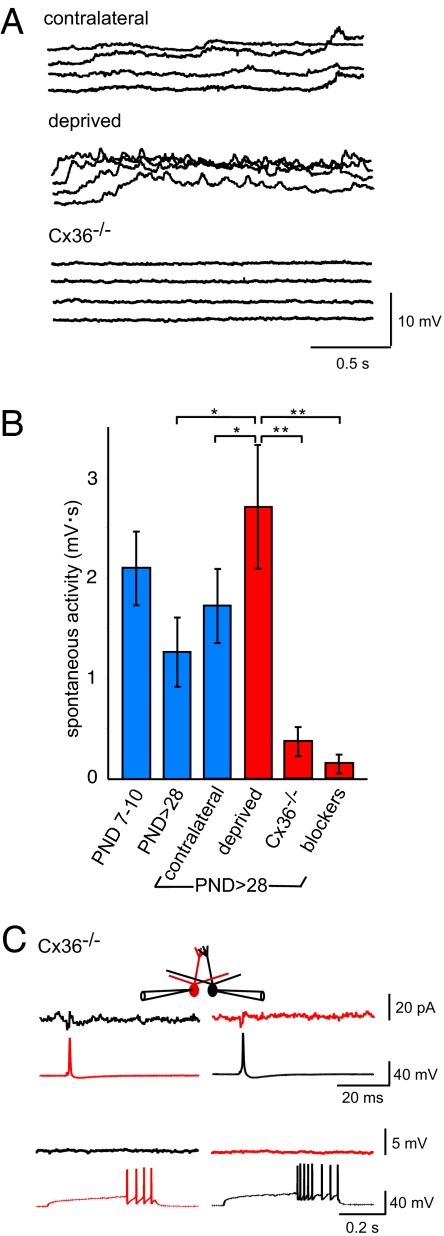Fig. 4.
Spontaneous mitral cell activity in sensory-deprived and Cx36−/− animals. (A) In young adult animals (P > 28) that underwent unilateral naris occlusion on P1, there was surprisingly robust spontaneous activity in the sensory-deprived bulb. The traces show 4 representative 2-s epochs of activity for 1 mitral cell. In contrast, an age-matched mitral cell from a Cx36−/− (undeprived) animal had very little spontaneous activity. (B) Spontaneous activity was integrated (mV-sec) for mitral cells in the groups of animals shown after determining a baseline during a quiescent period for each cell, before the period of data collection. As discussed in the text, spontaneous activity was actually somewhat greater in the deprived bulb than in age-matched controls, whereas in Cx36−/− mice, it was reduced to the same degree as by addition of NBQX, AP5, and gabazine (blockers). (C) Mitral–mitral EPSCs were not present in Cx36−/− mice. Short and long current injections elicited single bAPs or bursts of bAPs, respectively, in either mitral cell (bottom traces), but no synaptic current was present in the corresponding postsynaptic mitral cell (top traces; n = 8). The small response represents capacitative coupling. All traces represent an average of 7–10 consecutive sweeps.

